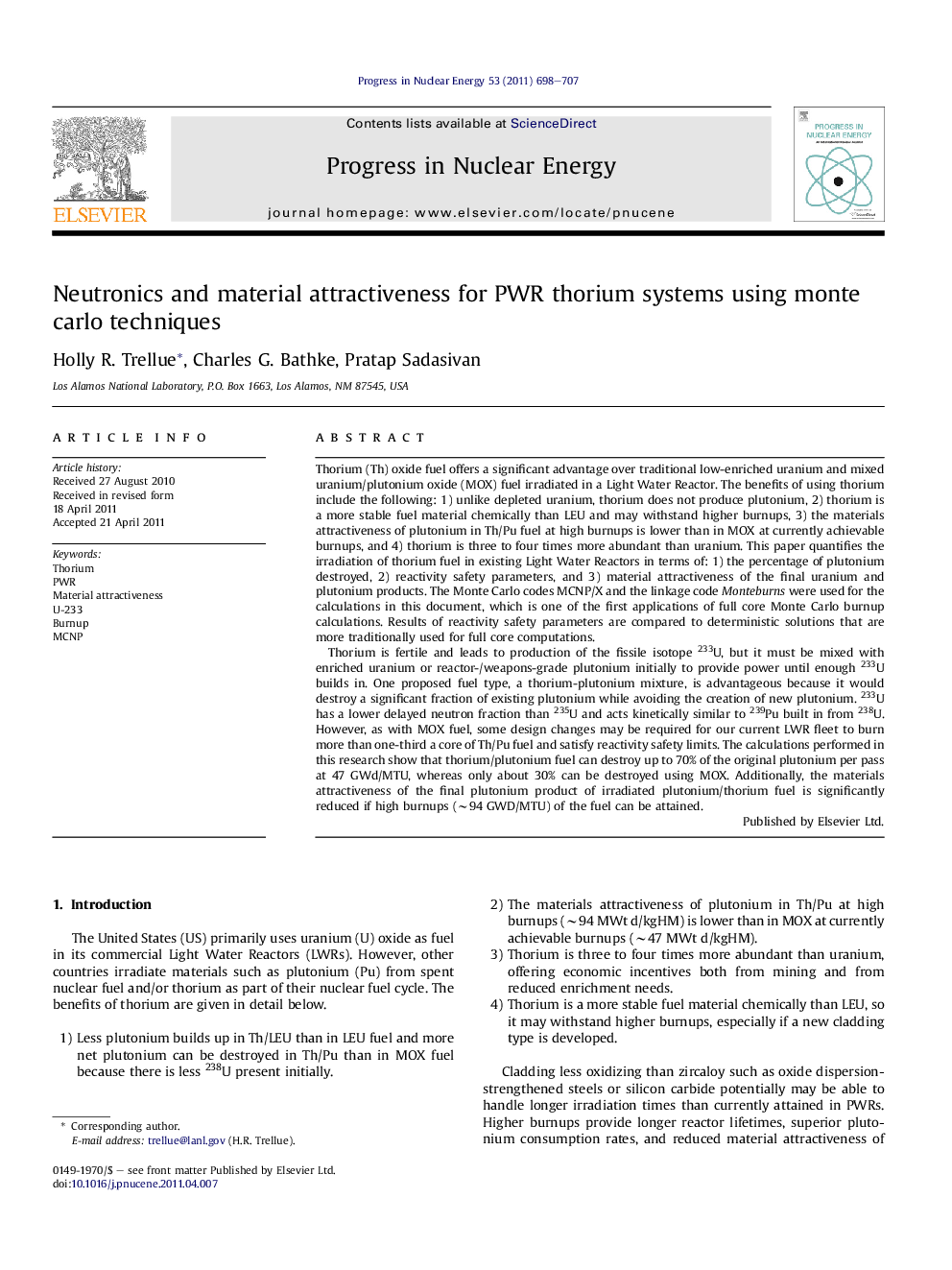| Article ID | Journal | Published Year | Pages | File Type |
|---|---|---|---|---|
| 1740969 | Progress in Nuclear Energy | 2011 | 10 Pages |
Thorium (Th) oxide fuel offers a significant advantage over traditional low-enriched uranium and mixed uranium/plutonium oxide (MOX) fuel irradiated in a Light Water Reactor. The benefits of using thorium include the following: 1) unlike depleted uranium, thorium does not produce plutonium, 2) thorium is a more stable fuel material chemically than LEU and may withstand higher burnups, 3) the materials attractiveness of plutonium in Th/Pu fuel at high burnups is lower than in MOX at currently achievable burnups, and 4) thorium is three to four times more abundant than uranium. This paper quantifies the irradiation of thorium fuel in existing Light Water Reactors in terms of: 1) the percentage of plutonium destroyed, 2) reactivity safety parameters, and 3) material attractiveness of the final uranium and plutonium products. The Monte Carlo codes MCNP/X and the linkage code Monteburns were used for the calculations in this document, which is one of the first applications of full core Monte Carlo burnup calculations. Results of reactivity safety parameters are compared to deterministic solutions that are more traditionally used for full core computations.Thorium is fertile and leads to production of the fissile isotope 233U, but it must be mixed with enriched uranium or reactor-/weapons-grade plutonium initially to provide power until enough 233U builds in. One proposed fuel type, a thorium-plutonium mixture, is advantageous because it would destroy a significant fraction of existing plutonium while avoiding the creation of new plutonium. 233U has a lower delayed neutron fraction than 235U and acts kinetically similar to 239Pu built in from 238U. However, as with MOX fuel, some design changes may be required for our current LWR fleet to burn more than one-third a core of Th/Pu fuel and satisfy reactivity safety limits. The calculations performed in this research show that thorium/plutonium fuel can destroy up to 70% of the original plutonium per pass at 47 GWd/MTU, whereas only about 30% can be destroyed using MOX. Additionally, the materials attractiveness of the final plutonium product of irradiated plutonium/thorium fuel is significantly reduced if high burnups (∼94 GWD/MTU) of the fuel can be attained.
► Thorium serves as an alternate fuel source in a Light Water Reactor. ► Thorium is more abundant than uranium and reduces plutonium production. ► Higher burnups with thorium fuel reduce material attractiveness and increase plutonium destruction.
